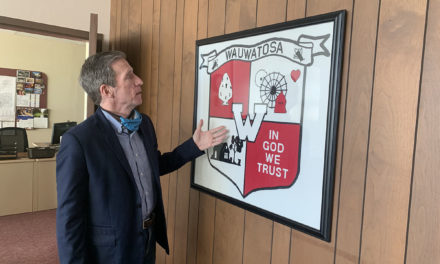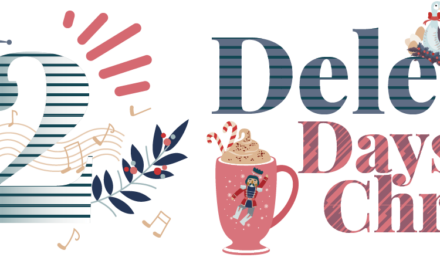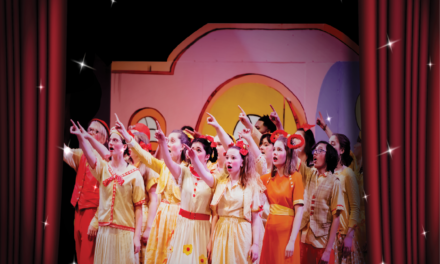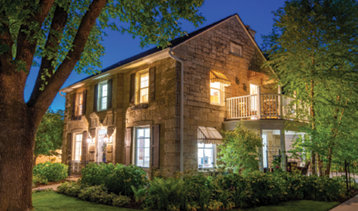By Marty Lamers
There is something about falling snow that makes me pause and smile. When I see those huge, pregnant flakes drifting slowly from the sky like mysterious cotton balls, my mind will often lazily drift back to other snowfalls and the various adventures of wintertimes spent in Wauwatosa.
I consider myself lucky to have grown-up in Wauwatosa in the 70s and 80s, though I live in the South now. It’s easy for me to get all warm and fuzzy about cold weather but to be fair and completely honest, I only see it from a distance most often now. Yet I remember it vividly.
Sure, waking up early to shovel is no fun. Subzero weather slapping you first thing in the morning can be a bit bracing, to be kind. Slushy wet stuff in your boots is no one’s idea of greatness. Getting dark at 4 in the afternoon and those perpetually gray skies can swing anyone’s mood downward.
Winter surely has its inherent challenges; but especially if you are young (or young at heart), winter in Wauwatosa can also offer you a wealth of amazing moments that become treasured lifetime memories.
Sledding
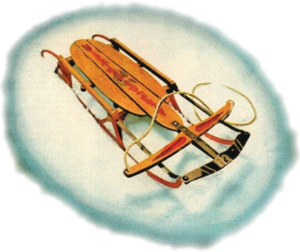 I can remember almost every sled I ever used as a kid. In the family, we had a bunch in the garage always ready to go, from the single-person, metallic silver saucers that whipped like uncontrolled lightning down any hill, to the Norman Rockwell-esque ones from the 40s and 50s with metal frames and wood tops that you could steer a bit but were kind of scary. Those metal-framed sleds looked like they might actually cut a kid in half, and I am sure there were whittled torsos on hills somewhere they weren’t telling us about.
I can remember almost every sled I ever used as a kid. In the family, we had a bunch in the garage always ready to go, from the single-person, metallic silver saucers that whipped like uncontrolled lightning down any hill, to the Norman Rockwell-esque ones from the 40s and 50s with metal frames and wood tops that you could steer a bit but were kind of scary. Those metal-framed sleds looked like they might actually cut a kid in half, and I am sure there were whittled torsos on hills somewhere they weren’t telling us about.
There were boat-like, molded plastic sleds that were my favorite, because you could sit, lay, or ride with someone else on them, and they were light and easy to get back to the hilltop. We also had the old wooden toboggan that needed two people to pull it up the hill by its twisted yellow nylon cord. It could fit like 82 kids at a time and seemed like it was 12 1/2 miles long. When that one came out it was more of a chore assigned than a day of fun, and we even needed a car and adults to bring it anywhere. I think I actually cried whenever that one came out of the garage, even on into high school and beyond.
The only ones I truly hated though, were the little plastic ones you would roll-up to store. We had a dozen of them, rolled and stacked in the corner, to be sure everyone everywhere always had a sled (or something like it). They never quite flattened out on the hill though, so getting stuck with one of those for the day lacked the pleasure (or terror) the other sleds held. I had to continually try to flatten them as I rode which wasn’t easy when weighing less than 100 pounds. Even when I got bigger, these hateful sleds were still like bear traps waiting to get me. Riding on one was more like going 10 feet, then having the sled wrap itself back into a circle as if I wasn’t even there. Repeat clumsily, all the way down the hill. If the huge toboggan was a nightmare unleashed, these rolled-up plastic ones were gentle punishments for sure.
Finding snow covered hills to ride in Tosa is not hard to do. Anything with enough incline made a perfect place to try, but there were some favored gathering spots for sure.
- Longfellow had a couple of great hills that we could walk to, and lots of friends would meet there when we were younger. Though icy bits and suicide slides were always part of any well-worked hill, it was not a scary place to get in some great runs in with your friends. Except maybe, for scaring ourselves with the nearby graveyard. I liked to think the graveyard was filled with sledders who weren’t so lucky, probably clipped in their prime and made a torso by one of those vicious wood-and-steel sleds now tucked-up in our garage.
- Dewey hill was where I went sledding as a teenager and into adulthood. A more serious hill than Longfellow, there was also always a run out of the woods to the left that was even more icy and treacherous. It often had some nickname associated with death, a grave, or the devil, just to make it additionally menacing. I remember more than once not getting out of the way fast enough and being leveled by someone shooting out of those trees like they were bobsledding. And trees were such a big part of sledding on Dewey, to me. The hay bales spread loosely around the big trees in the middle were meant to protect you from smacking one with a direct hit. Yet many times I would launch into the air off the slick, icy sides of them, smelling the wet and musty hay on my way into a tumbled oblivion. It was truly glorious, and a crucial part of every Tosa winter I enjoyed for decades. Walking back up that hill often felt like a lifetime but zipping down it was pure, unabashed adrenaline.
- Underwood Parkway in the 70s held some incredible sledding hills. This was the favorite place of my family and neighbors, and I spent many weekends trudging up the hill, and racing down again at breakneck speeds. Hay bales created lanes, and some were always faster than others for sure. I got leveled here regularly – you seriously had to watch yourself or would get taken out in seconds by a red flyer, a saucer, or worst of all, the family toboggan loaded
 with 82 kids. Hay bales also marked the outer edges of the runs to keep us off the golf course, but you’d have to build up a lot of momentum to actually reach them (and we did). I saw that at some time in the 80s, they let the scrub trees and bushes all grow back in on the road’s edge, so you couldn’t sled here anymore even if you wanted to. And based on my memories as a small kid sledding on these hills, it was truly a great place to celebrate winter…but it also clearly illustrates how things simply evolve over time.
with 82 kids. Hay bales also marked the outer edges of the runs to keep us off the golf course, but you’d have to build up a lot of momentum to actually reach them (and we did). I saw that at some time in the 80s, they let the scrub trees and bushes all grow back in on the road’s edge, so you couldn’t sled here anymore even if you wanted to. And based on my memories as a small kid sledding on these hills, it was truly a great place to celebrate winter…but it also clearly illustrates how things simply evolve over time.
Schoolyards
Because I grew up in Wauwatosa when I did, I was able to play on the school grounds both before and after school, for no good reason at all. I know this is no longer possible, and it’s a shame. We were blessed in the fact that a school shooting was not going to be defined yet for decades. Our parents instead knew we were pretty safe at school, and we met-up there to play all year round. But winters meant extra fun, because of the playground ice rinks.
I attended Lincoln, but think it was the same for most if not all the other Tosa schools as well. As soon as it stayed cold enough, they would flood part of the playground and make an ice rink. They would keep it shoveled, and it was lined typically with huge piles of snow. I never saw them do it but looked forward to it every year I attended Lincoln through the 70s. I know I skated at Washington and think I saw the rinks made at Wilson too, but Lincoln’s rink was our turf.
We would carry our skates and show-up to school early – bundled against the elements and ready to skate, and play, and have fun before the day began. Snowball fights, King of the Hill, snow angels and building snow people, icicle collecting…but most of all skating was such a draw we didn’t even realize we were spending much more time around school than they asked of us. And after the day was through, we’d often be right back on the ice, sometimes until the streetlights came on, our cheeks as red as apples and breath coming out in excited puffs. We’d play until darkness told us to go home.
Those walks home in the early twilights of a Wauwatosa winter were also quite magical. As long as we showed up by supper, our parents “knew” where we were…another relic of a bygone era now. So a walk home might wind and wander to down by the parkway, where snowdrifts on Ludington and Honey Creek Parkway were routinely pushed-up 10 or more feet by the plows. Sometimes my tracks would be the only ones to be seen, and I would imagine I was in a Jack London story about to freeze to death because I was so isolated and remote. It wasn’t really much of a stretch.
But my favorite thing, was when the temperature dropped quickly with the evening’s onset, and it created a thin layer of temporary ice on the snowbanks that could hold my weight. The snowdrifts plowed next to the road were always many feet deep, so walking across them on the ice was a test: I’d break through from time to time, so had to try to stay on top and keep moving. Breaking through that thin crust of ice might even scrape me up and hurt a little, but it was worth every bit of blood shed to have that exciting experience and to test my inherent arctic abilities. Jack London had nothing on me.
Blizzards
Waxing nostalgically about winter would be incomplete without thinking about the many blizzards I have survived. Plus, I have the added benefit of being an old guy now, so I get to complain that today’s whippersnappers have no idea what we went through back in my day. In some ways, it is actually true, though every generation says it. A blizzard is always better seen safely in retrospect, of that much I am certain.
I walked to school from first grade through senior year, so this included about 12 winters. When we woke to a blizzard in the 70s and early 80s, we’d look outside in the dark to see sparkling white snowdrifts covering everything. Shoveling the walks or digging out a car before school (or even breakfast) was normal. School was only cancelled on super rare occasions – we’d listen to the radio or watch the news to see if our school district was named in the closings, but it seemed like it never was. I would grumble and put bread bags over my heavy wool socks to allow them to slip into my boots more easily, and bundle-up against subzero temperatures to trudge off to Lincoln, Longfellow, or East. Everyone I knew walked to and from school, it was simply expected of us all in any weather.
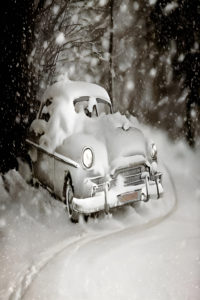 I remember pushing through unshoveled sidewalks in waist-deep snow all the time. It was part of the normal winter routine. Sometimes it got even higher – in ’78 or ’79 I remember it being up to my chest and neck, and I still had to push through to get to school on time or handle my paper route. Granted, my chest was a little closer to the ground back then, but I was not an overly small kid as a 12-year-old…the blizzards just felt more intense to me, and no one cared that it was cold outside, and the snow was swallowing you whole – you still had to do whatever you had to do.
I remember pushing through unshoveled sidewalks in waist-deep snow all the time. It was part of the normal winter routine. Sometimes it got even higher – in ’78 or ’79 I remember it being up to my chest and neck, and I still had to push through to get to school on time or handle my paper route. Granted, my chest was a little closer to the ground back then, but I was not an overly small kid as a 12-year-old…the blizzards just felt more intense to me, and no one cared that it was cold outside, and the snow was swallowing you whole – you still had to do whatever you had to do.
As I got older, it was common to help those around you when a blizzard hit. It was simply what you do in Wauwatosa. Once TC publisher Peter Haise and I were on our way home from Madison when a whopper of a storm hit us and Milwaukee, dumping over a foot of snow in a couple short hours. Peter had a 4-wheel drive truck, so we put on tire chains and went around downtown, pushing trapped motorists out of snowbanks and helping strangers get back on their way. We did it for hours, and then ended the day with a celebratory dinner, exhausted but gratified too. No one had asked us to go help, and we just did it because we could. But it felt great when we were done, like we had been a part of something.
That is a part of Wisconsin winters that probably means the most to me, now looking at it all in the rear view. There is a selfless sharing, a camaraderie bred by enduring a bitter cold with your neighbors for months at a time. You really can’t make it alone; you are all in it together and need each other’s help to see the Spring safely. Jack London’s arctic stretches and the deadly swipes of ancient sleds notwithstanding, of course.
So to my memories, whenever held in winter’s tightest grasp, the people of Wauwatosa just silently banded together, and each of us grabbed a shovel to help dig each other out. No one had to ask, and it was not necessarily expected, yet it happened all the time. After spending years down South, I can promise you, it is not the same everywhere…it is something special, and perhaps even unique to Wauwatosa or Wisconsin. It is something you can grow to miss.
Getting warm and fuzzy about harsh, cold weather doesn’t make sense to a lot of my friends down South. But then again, they have never been lucky enough to enjoy a winter spent with the people in Wauwatosa.


